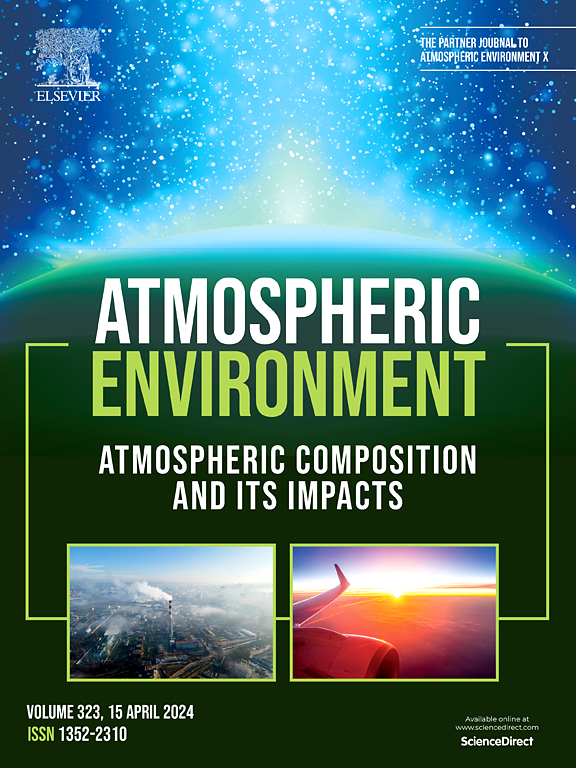Switch of gaseous element mercury source/sink in a Hg-contaminated subtropical forest by variation in atmospheric Hg pollution
IF 4.2
2区 环境科学与生态学
Q2 ENVIRONMENTAL SCIENCES
引用次数: 0
Abstract
The exchange of gaseous element mercury (GEM) between forests and atmosphere is an important part of the global mercury (Hg) cycle. However, there is ongoing debate about whether forests are as a net sink or source of GEM, especially in Hg-polluted regions. This study monitored the GEM fluxes over the canopy of an Hg-contaminated forest in subtropical Southwest China from August 2017 to December 2020 b y the aerodynamic gradient method. From August 2017 to July 2018, the atmospheric GEM concentration was 4.41 ± 1.49 ng m−3, with the forest serving as a source, exhibiting an average GEM flux of 101 ± 226 ng m−2 h−1, higher in summer (270 ng m−2 h−1) and lower in spring (13.3 ng m−2 h−1). By contrast, after 2019, the atmospheric concentration increased to 10.8 ± 36.3 ng m−3, due probably to adjacent city construction, resulting in the forest being switched to a net GEM sink (−48.5 ± 254 ng m−2 h−1). These findings indicated that atmospheric GEM concentration might play a major role in the GEM sink/source transition of forests. Future decreases in atmospheric Hg concentration may prompt the forest to release GEM again. Further studies are required to determine the time needed for the GEM exchange between the atmosphere and forest to reach a balance.

森林与大气之间的气态汞元素(GEM)交换是全球汞(Hg)循环的重要组成部分。然而,关于森林是 GEM 的净汇还是净源的问题一直存在争议,尤其是在汞污染地区。本研究采用空气动力梯度法监测了2017年8月至2020年12月期间中国西南亚热带地区受汞污染森林树冠上的GEM通量。从2017年8月到2018年7月,大气中的GEM浓度为4.41±1.49纳克/立方米,森林作为一个源,表现出101±226纳克/立方米-2小时-1的平均GEM通量,夏季较高(270纳克/立方米-2小时-1),春季较低(13.3纳克/立方米-2小时-1)。相比之下,2019 年之后,大气中的 GEM 浓度增加到 10.8 ± 36.3 ng m-3,这可能是由于邻近的城市建设导致森林转为净 GEM 汇(-48.5 ± 254 ng m-2 h-1)。这些研究结果表明,大气中的 GEM 浓度可能在森林的 GEM 吸收汇/来源转换过程中发挥了重要作用。未来大气中汞浓度的降低可能会促使森林再次释放 GEM。要确定大气与森林之间的 GEM 交换达到平衡所需的时间,还需要进一步的研究。
本文章由计算机程序翻译,如有差异,请以英文原文为准。
求助全文
约1分钟内获得全文
求助全文
来源期刊

Atmospheric Environment
环境科学-环境科学
CiteScore
9.40
自引率
8.00%
发文量
458
审稿时长
53 days
期刊介绍:
Atmospheric Environment has an open access mirror journal Atmospheric Environment: X, sharing the same aims and scope, editorial team, submission system and rigorous peer review.
Atmospheric Environment is the international journal for scientists in different disciplines related to atmospheric composition and its impacts. The journal publishes scientific articles with atmospheric relevance of emissions and depositions of gaseous and particulate compounds, chemical processes and physical effects in the atmosphere, as well as impacts of the changing atmospheric composition on human health, air quality, climate change, and ecosystems.
 求助内容:
求助内容: 应助结果提醒方式:
应助结果提醒方式:


